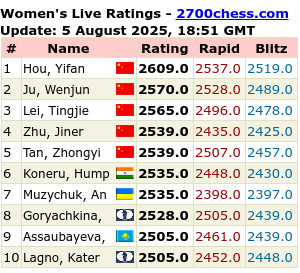At the end of this post, is the last position from Chess Tactics for Beginners (CTB ).
Time-wise, and reflecting my lack of obsession regarding a speedy completion of these, I have probably taken a comfortable 9 to 12 months ( in elapsed time ) to do this, with a boost last Thursday for the last 32 examples , some of which I repeated again this morning, since a midnight finish is not the most sensible.
The final position was straightforward, and not involving any technical things such as "opposition", "queening squares" or "shoulder-charging" or the like, just a simple calculation.
I don't think my particular version of CTB exists with Convecta/ChessOK any more, as they have been ' peshka-ising' their old CD products for some time now.
I suspect that the nearest is now this, which is a 3-part product having approximately the same number of examples to solve ( 2500 ).
CTB was one of the products that was used previously in the chess blogosphere to try to emulate the 'de la maza' tactics splurge ( see here for one example ).
[ The 'de la Maza' info is viewed statistically here and here by the excellent Empirical Rabbit blog and his story summarised by Heisman here ). ]
Repeating standard tactics a set number of times ( often, the magic number of 7 is mentioned ) was often an initial step in the 'Knights Errant' chess improvers, with a view that such positions were retained and used as a base for further improvement. It should be noted that the target time for completion of these repetitions was generally a lot less than the year I took for one :)
What I have taken away from completing CTB is that this is a very useful exercise.
When I carried out these exercises over a regular period prior to playing an arranged TL game, for example, the benefit was evident and displayed in the game. I still needed to concentrate and focus, but I saw more tactics, although sometimes after I had played my move !
The real benefit comes from doing these tactics regularly, and on a continuous basis, probably by using one of the many chess tactics servers out there.
An alternative to a tactics server would be to use something like Mnemosyne or Chess Position Trainer, although unfortunately, the latter seems to have stagnated in its development. I hope not a permanent stop, as its a great product.
Another gain for me is an interest in endings, particularly King and pawn endings.
I've tried learning these before but never really clicked with them, but it seems that doing example tactics and then moving to theory, is, for me, a better approach.
The hidden cupboard has now revealed my old Keres Practical Chess Endings ( a stunning thousand British Pounds new ! ) and Howell's Essential Chess Endgames ( an amazing 250 British Pounds new ! ) , and I will see if I can fan this spark of interest into a bit more of a theory and practice fire.
Anyway, enough.. here's the final problem....
 |
| White to Play |
Footnote:
Having found the above direct link to the old circles , here's the highlights of the Confessions of a Chess Novice blog, from Blue Devil Knight, a great blast from the past.
Its been quite some years since I looked through that. Just clicked on a couple now and there's some good information there ( and presented in a great style ), some of which is still being blogged about in similar ( and of course, different ) ways now.


2 comments:
I went through the 2nd portion of CTB IE Ivaschenko 1b, so the problem you posted was familiar to me. I found it to be an excellent problem set and the motif that I really came away with was attacking weak back ranks with surprising (usually) queen moves.
Ivaschenko 1a contains very basic problems so I didn't bother, although I imagine the later stages tend to have enough difficulty to be worthwhile. 1a + 1b is a very good tactics workbook for beginners up through intermediate players though.
I'm currently working my way through Ivaschenko 2 IE Chess Tactics for Intermediate Players. I find the 1900+ elo rated problems to be very difficult, although I've only gotten through the mating combos section so far. I wish they had a way to sort these by difficulty the way it's possible in CT-ART.
I have the Howell endgame book and I found it to be very good and well... practical as the title states. :)
Thanks for commenting, Silent Knight.
I didn't realise these set of tactics were also available as books. I am guessing that the Iveschenko 1b corresponds to the section ' How to proceed' as that is about 1500 unclassified exercises. The initial set are straightforward mates in one or two, and pretty easy/boring for anyone but a complete beginner, although worthwhile to complete.
I will certainly repeat these at some point, but I may also go through Weteschnik's Understanding Chess Tactics as well or instead as it gives a great 'theory' view to tactics.
Post a Comment